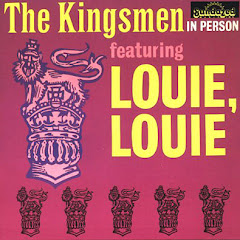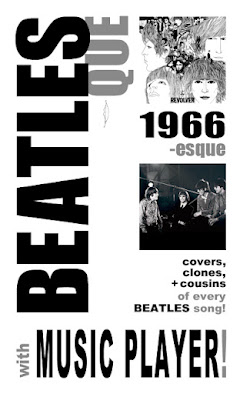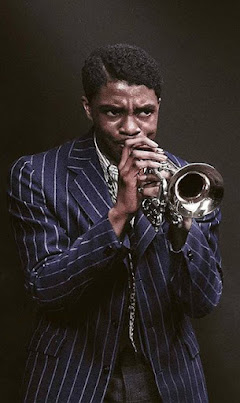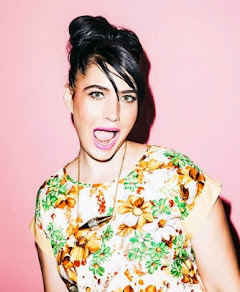“Fixed upon the light that guides her,
whispering of grander things than darkness ever knew.” -Finrod
The excellence of the LORD OF THE RINGS television series is on a new level so high that everything else seems like a school play. Everything.
The acclaimed RINGS books inspired all of modern Fantasy, the ultimate standard that others strive to reach. The ambitious new series exceeds all others with unmatchable scope and craft redefining that standard with what hasn't been done before. It challenges fandom, viewers, and the medium to include, amend, and expand.
Explore the worldbuilding, political heart, and fine art influences that propel the one show that rules above all others.
C H A P T E R L I N K S :
• 1- Worldbuilder
• 2- Fellowship
• 3- Vistas, with Art!
• 4- Legendarium
1
W O R L D B U I L D E R
J.R.R. Tolkien is the original architect of worldbuilding.
The Oxford philologist forged cosmologies, histories, genealogies, languages, lore, and maps for his Middle Earth stories, mined from deep research into European myths and tongues. Just as Shakespeare had sieved the past for his alchemical body of work, Professor Tolkien’s scholarship turned speculative fiction into literature.
Throughout human history, fable has always created literature. Our need to project ourselves as avatars in larger adventures with a moral point helps us process our experience as a people as much as as a person. It is the weaving suture which threads "The Epic Of Gilgamesh" (Mesopotamia), "The Panchatantra" (India), Homer's "The Odyssey" and "The Iliad" (Greece), "Beowolf" (England), "Arabian Knights" (Middle East), and "Le Morte d'Arthur" (England), and meshes into the tapestry of Campbell's overview of all myths/stories, "The Hero With A Thousand Faces" (1949). Tolkien essentially took the roots of European fables and created a new "Odyssey" which could branch out in new expressions.
Without his inestimably influential books “The Hobbit” (1937) and “The Lord Of The Rings” trilogy (LOTR, 1953), modern speculative storytelling wouldn’t exist, nor have the global credibility and popularity it enjoys.
In a creative relay, the intricacy of his worldbuilding charted the course for examples as wide-ranging as DC’s Multiverse (1961), Moorcock’s “Elric” (1961), Herbert’s “Dune” (1965), 'Star Trek' (1966), the “Dungeons And Dragons” roleplaying game (1974), STAR WARS (1977), the “Warcraft” video game (1994), Martin’s “Game Of Thrones” books (1996), Rowling’s “Harry Potter” books (1997), and the MCU films (2008), among myriad. And the convergence of his passionate and articulate readers helped establish fandoms (and cosplay, fans-to-pros, and conventions) as we now know them. While sports fans have stats, creative fiction fans have worlds or omniverses.
His voluminous notes, poems, myths, short stories, essays, and personal letters of supplementary material were compiled posthumously by his son Christopher into multiple addendum books. It’s here where the rich backstory of the fabled eras before the Third Age of the books was revealed.
“I must follow the passage. The other direction.” -Arondir
After Amazon Studios won the rights to adapt a new LOTR TV series, they chose to explore that unexplored history to distinguish the new show, with deference, from Peter Jackson’s Oscar-winning film versions of the original books. Showrunners J.D. Payne and Patrick McKay had the unenviable challenge of crafting a narrative story out of the myth miscellanea that could not only imitate Tolkien’s tomes but match him. They have done so spectacularly.
'The Lord Of The Rings: The Rings Of Power' not only equals the caliber of the Jackson films, it betters them by amplifying his production craft, while expanding outward with fresh possibilities and casting.
2
F E L L O W S H I P
“A dog may bark at the moon. But he cannot bring it down.” -Durin IV
Most value progression, but some do not.
Tolkien’s underlying mantra was that education opens truth and understanding. The charm of the original book, “The Hobbit” (1937), comes from bringing the insular (suburban) Bilbo Baggins out into the wider world by exponential degrees. The more he explores, the deeper he becomes.
In this spirit, the majority of fans, viewers, and reviewers have embraced the advances of the new series as inspired and liberating. The sidelong exceptions basically break down into two groups: text purists, who are actual fans; and hostile trolls, who are not. The distinction is important.
As loyalists who care about the works, the purists have some merit when they chafe at the time abbreviation taken with the material. The TV series conflates separate events from across many years in the Second Age as happening together. But, since the cost of adapting the whole history of Middle Earth to screen in separate arcs is impractical and the compression done here is so successful, even a staunch literalist could admit these concerns are quibbles.
“…where the shadows lie.”
But then there’s the online troll, who is just a bigot taking issue with the inclusive casting. Bigotry, as the general media continually misunderstands, is not valid as an opinion or as public discourse; it is hate, the spiritual violence that erodes civilization. Trolls are the voice (or the bot) of the oppressor who’s afraid of losing grip. They are never true fans of the creative media they firebomb, but simply outside saboteurs of any advance for progress or quality or truth. When the media fails to distinguish these assassins from actual fans (or activists), the obfuscation validates the haters’ abuse. ▶
“It darkens the heart to call dark deeds “good”. It gives place for evil to thrive inside us.”
-Galadriel
Tolkien had no love for wars of hate. Traumatized by his service in World War I, he directly wrote “The Lord Of The Rings” (1953) as an eternal damnation of Hitler and all forms of Fascism. He had no tolerance for the tyrant, the zealot, or the mad (Sauron, Saruman, Denethor) who oppress, or for the thrall, traitor, or thug (Nazgul, Gollum, Orcs and Trolls) who follows them. His credo was that the forces of negativity will always lose to the organized positive.
➤ "On the time J.R.R. Tolkien refused to work with Nazi-leaning publishers”
Lake-town citizens
And the trolls have already lost. The precedent for inclusive casting has been set in Tolkien screen versions across two decades. Peter Jackson and his co-writers Fran Walsh and Philippa Boyens took a progressive approach to the books in his film adaptations: positioning powerful and complicated women -Galadriel, Arwen, Eowyn, and Tauriel- front and center; and, in the river nexus town of the second HOBBIT film, by bringing in other complexions from the wider world outside The Shire.
“There’s common sense and nonsense. And if you’re all out of the first, then you can borrow some of mine.” -Poppy
In the time since, inclusive casting became standard in Fantasy productions as a given, such as in THOR, ‘Doctor Who’, ‘Game Of Thrones’, STAR WARS, ‘Steven Universe’, A WRINKLE IN TIME, ‘His Dark Materials’, ‘The Wheel Of Time’, ETERNALS, ’Arcane’, ‘The Sandman’, and ’Willow’. The real world in all its rich diversity is the weaver of our fantasies, and Fantasy is bettered by reflecting our real world.
Diversity has actually always been the point. It would be a novice mistake to dismiss Tolkien’s work as ‘European’, as if this generic shorthand signified a simplistically guilty monoculture. But, like everywhere, Europe is a general region made up of many radically different and complex nations, populations, histories, and languages. It was those very differences that led to World Wars I and II. As a philologist, Tolkien translated the archetypal legends of these nations into personified species (elf, hobbit, dwarf, human, etc.), each distinct but all guided by soul. Underneath this effort, it’s as if he is trying to reconcile the real world conflicts by reminding the nations where they came from, how much unique good each has to offer, and how their unity can solve any upset. A fellowship, ringed.
“Haven’t you ever wondered, what else is out there?… I can’t help but feel there are wonders in this world.” -Nori
Advancing through awareness of the big picture has also been a driving theme in his work. The same way in which we evolved from flat local maps to making globes, so did Middle Earth in its literal form. In the backstory, Tolkien’s world started out as a flat plain with a central continent illumed by artificial light, but was later transformed into a spherical world of varied land masses, with a sun and a moon in outer space. By linking the evolution of our actual geographical understanding to an imagined metaphysical transformation, Tolkien implied that this world would continually expand beyond myths and transform with new knowledge, just as we have grown through awareness of new continents, outer space, or other dimensions. There is always more than an illusory middle.
In the final rebuke against all isolationism, Tolkien’s delineation of the very different European cultures set the example for other worldbuilding creators to explore their own national mythologies and manifold depths. Beyond heirs from Le Guin to Martin, his example is now magnified in mythos-building Fantasy works from Africa, China, Latin America, and the Middle East. One string to spool them all.
"Everyone, each of us, needs to decide who we shall be." -Queen Regent Míriel
3
V I S T A S
'The Rings Of Power' is sublime murals in an era that only understands billboards.
There are many exemplary films and series currently honed on a cinematic level. What distinguishes this one so clearly is its drive to not simply match its own legacy but expand it. This imperitive, to satisfy not just expectations but the unexplored potential, tries harder and achieves more. There is nothing on any screen as astonishingly vast, divinely composed, visonary in its revision, and poetically literate. (And it's able to do so because of Smaug's budget.)* It engages the eye, heart, and mind with the highest art and goals.
Some of the resistance to 'The Rings Of Power' comes from spectacle fatigue. What was stunning in the LORD OF THE RINGS films (2001-’03) has become devalued through endless repetitions or knockoffs: the CG artistry of infinite vistas, behemothic architectures, and impossible creatures is now push-button and all-pervasive in creative media. The best becomes devalued by too much of the least. Even the grand cinema screen, which once singularly embodied impact and importance, has had its eminence diluted by universal screens on TVs, desktops, laptops, smart phones, watches, lobby monitors, street ads, and app snaps. The biggest becomes devaluated by too much of the small. There are also screen adaptations of every variety of Fantasy franchise ever inked, streaming ad infinitum. At this strobed-out point, who can tell the great from the grift?
But all of this quantity can’t overrule Quality. A great story will always eviscerate imitations, excellent craft supersedes flashy clutter, and innovation fillets cliches. Quality is timeless, and lack turns to dust.
The first season of 'The Rings Of Power' is 8 IMAX films that happen to be on TV. The only real flaw hindering the series is that it is too vast for any personal screen, and every episode should have debuted on the cinema screen to be properly appreciated, like Jackson’s films had the benefit of. TV inherently reduces a scope it’s not equipped to contain, unless your TV screen is the size of a semi.
What immediately separates the series from the latest blockbuster is that its visual craft is based out of fine art. While many spectaculars seem the same because they overuse the same visual gimmicks as combat video-games, the show takes its cue from Tolkien and mines classical forms instead: classic paintings, Golden Age illustrations, tableaus, tapestries, historical textiles, architecture, and arthouse cinema.
“(Galadriel) was then of Amazon disposition and bound up her hair as a crown when taking part in athletic feats.” - 1973 letter by J.R.R. Tolkien
"Joan Of Arc" (1903), Charles-Amable Lenoir
Taking the cue from Tolkien, the young Galadriel of the Second Age is a warrior, the last of the Elves keeping vigilance against the rise of Sauron. She is Joan and Lancelot, armored form and steely resolve.
Morfydd Clark’s nuanced portrayal advances the character from a graceful regent on the sidelines (LOTR) to the central force of the story, ending outmoded gender conventions and advancing the breadth of what can be told and who can do it. Like Tolkien, the creators channel the lessons of history itself, such as the Norse myths of Valkyries or the varied legends of global amazons, and from the actual Agoji in West Africa.
The heroes in the LOTR books traversed the continent by foot and horse, but 'The Rings Of Power' introduces us to the wide oceans beyond, with mercantile fleets and fledgling rafts, doldrums and tempests, deepwater leviathans and suspect castaways.
Joseph Mallord William Turner
With an impeccable design crew and deep budget, the ocean scenes are among the most convincing and gripping yet done for a Fantasy series.
Elves are essentially the guardian angels of Middle Earth, the closest children of the gods. Immortal, stewards to the land while destined for starlight, their beyondness makes them revered and despised by mortals.
"The Girl with the Golden Wreath" (undated),
Léon François Comerre
As seen here, Galadriel wears bucolic gentility like a formality, but her fiery spirit cannot be quelled. She advances the potential seen in previous book characters like Arwen and Eowyn into a maturation and agency that contemporary audiences find more truth in.
If the Third Age was ruins in the wake of Sauron’s first rise, the Second Age is all of the civilizations at their height before that toll. 'The Rings Of Power' debuts the legendary island nation of Numenor, a paradise once hewn together by elves and mortals, and now distended by human hubris.
Ramsey Avery’s design department combined their piling Babylon with Minoan and Roman influences to evoke history and portent. It is a cosmopolitan oasis at the brink of overreach.
Trading ports are the intersection of humanity. Just as Tangiers, Macau, New York City, and San Francisco became international zones through trade and migration, so too have Lake-town (the second HOBBIT film) and Numenor become nexus hubs for all from anywhere.
The series shows us the widest range of mortals yet revealed in Tolkien’s world, reflecting the rich diversity of the human race. Purists or bigots aside, the precedent for this has always been in our history: from the intersecting national commerce of the Mediterranean or the Silk Road to China in the ancient world; to the Africans, Arabs, Bengals, and Sri Lankans (genericized as ‘Moors’) common throughout Medieval Europe. ▶
The actual history of the region known as England is one of continuous incomers from all of the nations around it, from Africa and the Nordic and Eastern Europe and beyond. If the argument is that the diversity of the outside nations couldn't exist in Tolkien's world because it wasn't present in the European nations he based it on, then it is uninformed and incorrect. ▶ ▶
Tolkien once compared Numenor to Venice, which the artisans reflect here in flowing canals and waterfalls. The mariner nation is essentially a human Olympus in the protean Atlantic Ocean, heraldic while swaying into the imperious.
Virgilio Mattoni de la Fuente;
"Richard III, Act I, scene ii" (1896),
Edwin Austin Abbey
With this quasi-imperial state, the series amplifies the inherent sociopolitical subtext of Tolkien’s works.
His kingdoms were allegories critiquing the proud nationalism which devolves into separatist hate and war, a blind folly that also hastens the collapse of the natural world. His themes were consistently ecological, antifascist, and egalitarian. His stories are cautionary tales for solving human abuses, from war to greed to zealotry to hatred. As such, his work and this series are more timely than ever.
(This also makes it the target of all those who are guilty of those abuses.)
Herbert Schmalz
Arthur Rackham
While Galadriel is a soldier and not a ruler, Queen Miriel (Cynthia Addai-Robinson) is the highest monarch of the mortals. The Kings of the later Third Age have been shown as despondent or mad, but by contrast she is a strongly moral leader with an iron will, tempered by enough conscience to take heed of change or peril. This is a welcome antidote to those later regents, exemplifying a brighter age that believes in possibility.
But Miriel also senses that prosperity isn’t a continuous given, or a bulwark against downfall. She’s aware of the wider world, and how solidarity helps protect everyone.
Gustav Klimt
If Elves tend the land, Dwarves foster the stone. In this earlier time we discover them anew as sculptors following the inner folds of the mountains with a spiritual respect. Later, they will lose course, hollowing out the mounts making empty cathedrals to themselves. Tolkien’s kingdoms are at their finest when selfless and honorable, but many will lose their way when they go selfish, bordered, and vainglorious.
Dwarf women have only been alluded to before, and the debut of Disa (Sophia Nomvete) refines all perception of them. She stands nobly with her partner Durin as an ally, conscience, and wry foil as dark times are augured.
We’re familiar with the Hobbits in the Third Age, comfortable in their suburban burrows. How did they get there? Here we meet one of their ancestors for the first time, the Harfoots, a nomadic tribe maneuvering a hostile world with crafty pluck.
True to Tolkien, they are the warm heart of the story.
For all of his academic discipline, Tolkien instead grounded his stories in the common people, earnest and giving, naive and heartfelt, rowdy and loyal. The Hobbits were the writer at his most homey, funky, boisterous, and playful.
If the Elves are parents to nature, the Harfoots are its children. The series dresses the Harfoots braided in hay and clover, swaddled in sackcloth and berry dye, scented in river and air. They are radiant in rich saturation, dappled in sunray impressionism, nestled in hearth glows.
Harfoots are akin to the Romani, living widely and loose, fluid, fertile. They are nature mobile. While wary of the world, their adaptive durability makes them clever, mindful, and gracious.
"The Harfoots were browner of skin, smaller, and shorter, and they were beardless and bootless..."
-J.R.R. Tolkien
Listening to the source himself, the series honored the material with expansive casting. Harfoots are brought to light for the first time in a refreshing global approach which includes Brit/Jamaican, Australian, Sri Lankan, Sierra Leone/Carribean, and Canadian actors. This breadth, robustly exercised in all of the series' casting, is the best advance that ever happened to Tolkien's material.
(The hobbit Sam, from LOTR, is also described as "brown" a few times.)
"Rip Van Winkle" (1905), Arthur Rackham
We’ve seen how the guileless Bilbo and Frodo provided a home and solace for a certain errant wizard. But now in the Harfoots we see what we hadn’t before with the Hobbits: women, from mentor to neophyte; a wider range of faces; some mysticism; the drive to explore (albeit, out of necessity); and their organic creativity.
The Stranger who falls from the heavens like a wayward lodestar, roused to a world he doesn’t recognize, couldn’t have found better refuge than the delightful Nori and Poppi. (And if you don’t love folks named Nori Brandyfoot and Poppy Proudfellow, you’re a pod from outer space.)
from “The Boy Who Knew What The Birds Said” (1920),
illustrated by Dugald Steward Walker
Let’s talk about trolls.
Tolkien fanned the array of humanity’s primal aspects across his peoples; the creative gods, the poetic Elves, the industrious Dwarves, the equivocal humans, the folksy Hobbits. But he also overlaid the array of our inhumanity across his villains: the despotic conquerors, the insane leaders, the kapo traitors, the covetous dragons, the violent orcs, the stupid trolls.
Trolls were created by the Lucifers of the story, Morgoth and his successor Sauron. They are soulless, cruel, and stupid. Drones for the evil mighty, shock troops for violence, thugs without redemption. They are the demonic in the selfish actions of humanity. They meet compassion with foolish hate, torment the decent, and toil for their manipulators.
This is why online thugs are called ‘trolls’. When a kneejerk troll bashes on "The Lord Of The Rings", actual fans must burst out laughing from the irony.
Cinema has always taken its visual vocabulary from the arts and photography. The Elves are lyrical art nouveau, the Harfoots are vivid impressionism, Numenor is pre-Raphaelite soft-lit majesty.
Orc carnage is brusk expressionism with its burnt ruins, slavery-hewn trenches, and strewn corpses. Scars, lashes, shards.
directed by Andrei Tarkovsky
Cinema also reflects the visual vocabulary of itself. Imagery may have become commonplace, but iconic imagery never loses its power or meaning. In repeating an approach, success comes from bringing something more to the idea, a new feeling, another way of seeing, an unexpected meaning.
Parrish’s paintings were called Neo-Classical, for using classical subject matter in a modern light. His work seems composed of light itself, with carefully layered vibrant glazes that evoke the sun gleaming through stained glass. The balance between open space and solid figures feels as poignant as a parable.
The mythical dryads (wood-elves) were intwined with trees. Tolkien’s elves are balanced between nature and eternity.
Much of the palpable feeling of reality in 'The Rings Of Power' comes from it being literal instead of digital. Practical sets were built on an expansive scale for nearly every sequence, or shot in panoramic locations with elaborate sets laced into them. From the fully functional Numinor sea port to the entire Southlands village to the grand terrace of Lindon with the White Tree, Tolkien's world lives in actuality.
Obviously, this has been standard practice in screencraft, but not on this scale: because of its seemingly limitless budget and the pedigree it has to match, the series has done so tenfold. It's seen and felt in every frame, not simply heightened spectacle but peerless craft. Nothing seems partial, looks backlot, feels synthetic. Like Tolkien's lands, every little and large thing seems sculpted, carved, scribed, embroidered, smelted, hammered, brewed, hoisted, or seeded by artisans' hands. A world, built.
The series’ boldest strength comes from taking us where we haven’t been before, and doing what many had always wished could be done.
4
L E G E N D A R I U M
“I call on you to finish the task undone.”
-Galadriel
Be bold, explore, grow.
Every time Tolkien’s works have been announced for adaptation, fans have been wary. ‘The work’s too complex,’ yelled some naysayers from the back, ‘and the screen’s too limited!’ Each screen version made, even when mostly lauded, was met with some quibbles from the loud crowd. The animated TV special 'The Hobbit' [1977] was pelted with cries of ‘Too many songs!’ The animated film THE LORD OF THE RINGS [1979] with ‘Where’s the other half?’ The animated TV special 'The Return Of The King' [1980] with ‘Songs again?’ A more grateful response would have been to appreciate that the four books were adapted at all, and so well.
Even Peter Jackson’s brilliant and universally acclaimed live-action THE FELLOWSHIP OF THE RING [2001] got ‘Where’s Tom Bombadil?’ from gripers. The answer is, the side guy wasn’t relevant enough to the main story. Jackson had a time factor of three hours, and he solved it by making visual poems of the text, a supercut of every dynamic moment and resonant line flowing clear and beautifully to fruition. Most everyone loved the film trilogy, and even more with the longer Director’s Cuts. Still, his later HOBBIT trilogy got catcalls of ‘Too many songs! Too hyper-sharp! No girls allowed!’ (Note the quick slide from quibbling into bias.) On the real side, the prequel film trilogy expanded Tolkien’s world in new ways that were only beneficial.
Jackson didn't just do what should be done, but what else could, advancing branches for new expressions.
“In the end, this shadow is but a small and passing thing. There is light and high beauty forever beyond its reach.” -Bronwyn
'The Lord Of The Rings: The Rings Of Power' has clearly learned all of the right moves from Jackson’s films: honor the text, respect the audience, positive core, focused pace, balanced emotional tones, go Shakespearian, base it in realism, exquisite craft, heartrending score, breathtaking cinematography. Most importantly, they’ve also taken his cue to expand the material for the potential, the medium, and the times.
Crucially, they’re able to do what he didn't have the luxury of, to expand time literally. With a general episode span of 70 minutes, they have breathing room for more scenes with greater depth. Concerns about pace evaporate next to the subtlety and intricacy that has been gained in the new medium.
Tolkien’ book and Jackson’s films are beloved globally for decades. Across all that time come fans from all places and perspectives. The new series is canny to represent not only the fuller range of humanity in its cast, but the full range of fans who now see themselves reflected in the creative world they love. They now have avatars to participate in a shared epic with an ethical heart. (And the only voices who could hate that can’t be counted as actual fans. Tolkien wouldn’t.)
“Hope is never mere… even when it is meager. When all other senses sleep, the eye of hope is first to waken, last to shut.”
- High King Gil-galad
The books were always political at their base, written by a war survivor who was processing his trauma through allegories. Even the gentler prelude, "The Hobbit", culminates in the Battle Of The Five Armies. In truth, Tolkien's work is more akin to Remarque's "All Quiet On The Western Front" (1929) and Kubrick's PATHS OF GLORY (1957) than to the Narnia books by his friend and parallel, C.S. Lewis. True to form, the series bears the torch for the professor’s timeless concerns: oppose dictators, rout the corrupt, beware nationalism and separatists, stir from complacency, unite in solidarity, defeat the thug, protect the natural world, enjoy life. This must always be said and clearly.
'The Lord Of The Rings: The Rings Of Power' has met all expectations and then exceeded them. It succeeds because of the hard work and dedication of its creators, diverse talents unified by a noble vision.:
Writers J.D. Payne and Patrick McKay, Gennifer Hutchinson, Jason Cahill, Justin Doble, Stephany Folsom, and Nicholas Adams; costume designer Kate Hawley; cinematographers Oscar Faura, Aaron Morton, and Alex Disenhof; concept artists John Howe and Alan Leed; Weta’s special effects; composer Bear McCreary; editors Bernat Vilaplana, Jaume Martí, Stefan Grube, Cheryl Potter, and Jochen FitzHerbert; and directors J.A. Bayona, Wayne Che Yip, and Charlotte Brändström.
In reflecting on Tolkien and Jackson’s approaches, their success comes from bringing more potential to the ideas, a new context, another way of showing, an unexpected liberation.
Embrace a fuller world.
See also:
THE FELLOWSHIP OF THE RING (2001)
THE TWO TOWERS (2002)
THE RETURN OF THE KING (2003).
TOLKIEN (2019)
✶ This article advocates a production
created by Amazon Studios,
but does not support the parent company
Amazon’s business practices.
© Tym Stevens
See also:
• BEST MOVIES + TV: 2022
• How STAR WARS Is Changing Everything!
• 2001: A SPACE ODYSSEY - Its Transcendent Influence on all Pop Culture, with Music Player!
• How SPAGHETTI WESTERNS Revolutionized Rock Music!, with 3 Music Players!
• TWIN PEAKS: Its Influence on 30 Years of Film, TV, and Music!, with 5 Music Players!
• THE CANON 1: 50 Books That Created Modern Culture, with Music Player
• THE CANON 2: 50 More Books That Created Modern Pop Culture, with Music Player
• THE CANON 3: 50 Recent Books That Created Modern Culture, with Music Player
• The Real History of ROCK AND SOUL!: The Music Player Checklist






































































































































































No comments:
Post a Comment